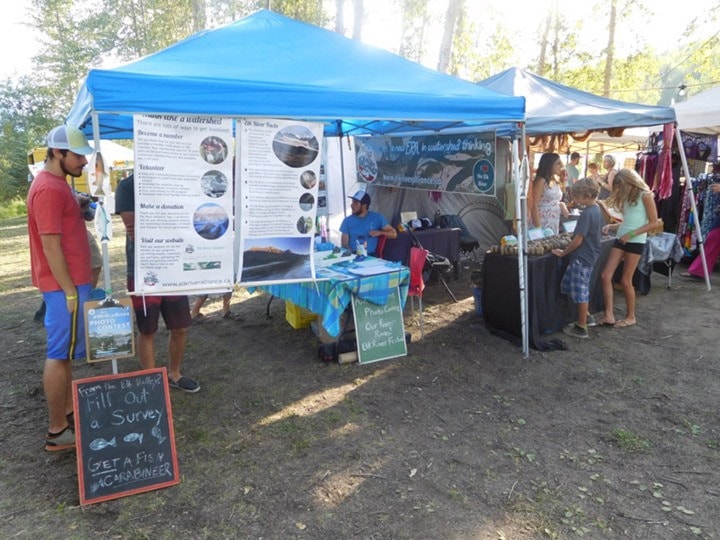The mechanism for flooding in the Elk Valley might be the same as it was a hundred years ago, but the manner in which it affects community and how we respond has changed significantly. There have been nine noted flood events since the settlement of coal mining communities in the Elk Valley, the first of which occurred in June 1903 and the most recent in June 2013.
In the early years of the Elk Valley, private landowners took matters into their own hands to protect their personal property in times of flooding. They built temporary dikes, riprapped banks with whatever material was available, as well as constructed diversion channels and bulldozed ditches to drain water. These efforts, however, sometimes resulted in altercations with authorities.
Beginning with the 1954 flood, communities were more prepared for spring floods. They attended flood defense meetings and were better coordinated in their efforts of sandbagging, patrolling and emergency response. In 1974, citizens and communities started asking for flood financial assistance, and the government dispatched equipment into the Elk River and tributary streams to dredge and channelize the river. After the 1986 flood, decision makers noted that floodplains were for flooding and they discouraged the clearing of trees along the river and floodplains, as well as river dredging, in an effort to protect fish habitat. In 1995 the province announced an $18 million flood-assistance package. The most recent flood of 2013 saw highly coordinated efforts between RDEK Emergency Services, municipalities, RCMP, local fire departments and Search and Rescue. Clearly our response to flooding is evolving to a more systematic approach.
Flooding is natural; it is only a problem when it affects people and infrastructure. Damage from flooding is always extensive: washed out roads and railway bridges, harm to homes, and interruptions of industrial activities can suspend operations and affect livelihoods. To assess the effects of this flooding on the Elk Valley communities, the Elk River Alliance surveyed community residents and conducted oral history interviews.
Flooding in the Elk Valley was a concern for most respondents. Primary concerns were for infrastructure damage and environmental impacts. They indicated apprehension over communities being isolated, risk to their personal property and overall cost of flood mitigation to taxpayers. Community also expressed concern about industrial activity with potential for mine tailing ponds to spill over or fail in a flood, as well as the impacts of escalating forestry activity in the watershed.
In regard to flood protection and mitigation, residents placed an emphasis on preventing negative impacts of flooding using non-structural flood mitigation methods, wherever possible. The preferred strategies were protecting and enhancing the riparian areas (i.e. natural area between river and higher land) and municipal zoning. Many residents voiced concern about the knee-jerk reaction to flooding with short-term fixes and funding that pays for infrastructure replacement. “Why fix failures; why not invest in protection and improvements?” Dredging was the least supported mitigation strategy. Community also requested that there be greater flood education available to the public, such as which areas are common flood hazard locations.
Community residents showed concern for the environment, primarily damages to the environment resulting from flooding and our attempts to stop it. Many expressed a desire to study evolving flood mitigation methods that are effective while maintaining healthy riparian ecosystems. Residents value healthy ecosystems and questioned the impact of flooding on wildlife, fish, tourism and recreation experiences.
To find out more about how flooding affects wildlife and the environment, and to learn more about flood mitigation options that improve habitat, read next week’s Elk River Current article.
